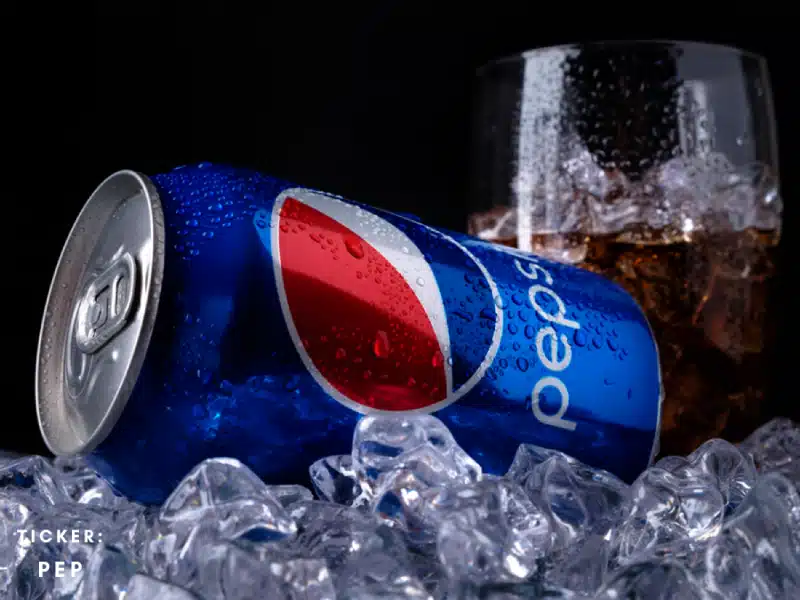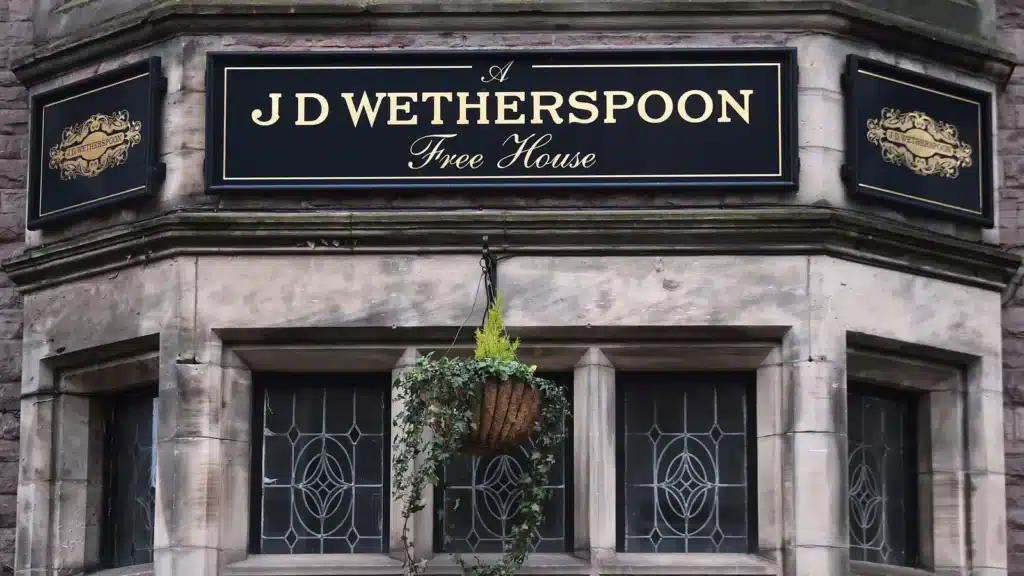Wetherspoons JDW Stocks
As of October 2024, J D Wetherspoon’s (JDW) stock has shown mixed performance, reflecting the challenges and strengths of the company. The company reported a revenue increase of 5.7% to £2.04 billion, though its net income decreased by 18.1%, indicating pressure on margins despite higher sales. The earnings per share (EPS) currently stands at £0.39, and the trailing price-to-earnings (P/E) ratio is 18.37, suggesting that the stock might be somewhat overvalued given its modest growth in net income
Wetherspoon’s valuation metrics reveal a market capitalization of approximately £885 million and an enterprise value of £1.97 billion. The company has a debt-to-equity ratio of 2.84, pointing to a relatively high debt load, which could be a concern given the volatile nature of the hospitality industry. The stock’s beta is 1.34, indicating higher volatility compared to the broader market.
Recently, Wetherspoon reinstated its dividend after a four-year hiatus, which could appeal to income-focused investors, though the yield is moderate at 1.7% FT Markets. Furthermore, with an enterprise value-to-EBITDA ratio of 8.11, the stock is priced fairly relative to its earnings, though investors should remain cautious due to sector-specific risks such as potential regulatory changes and cost pressures.
Overall, JDW shares are showing resilience, but the high debt and modest profitability growth could present challenges. Investors may want to consider these factors alongside the company’s renewed dividend policy when evaluating the stock’s potential.
Read more about:
Wetherspoons Share Price
As of October 15, 2024, J D Wetherspoon’s (JDW) share price on the London Stock Exchange is trading at approximately 707.50 GBX. This reflects a modest gain from its 52-week low of 587.00 GBX reached in October 2023, and the stock has ranged as high as 864.50 GBX earlier in January 2024. Wetherspoon’s shares have experienced fluctuations, partially due to economic challenges and regulatory pressures in the UK hospitality sector. The company’s dividend was recently reinstated, which may attract income-focused investors.
For investors, Wetherspoon’s current price-to-earnings (P/E) ratio is around 18.05, with a relatively high beta of 1.67, indicating higher volatility compared to the market. The company is managing significant debt, with a debt-to-equity ratio of 2.84, which could impact its financial flexibility. Overall, the stock remains a popular choice within the UK pub sector, especially with renewed customer demand.
J D Wetherspoon (JDW) offers several potential benefits
Strong Market Position: Wetherspoon is one of the largest pub chains in the UK, known for its affordable prices and wide reach. Its strong brand presence and large network of pubs make it resilient in the competitive hospitality industry.
Revenue Growth and Dividend Restoration: The company has demonstrated revenue growth, with a 5.7% increase to £2.04 billion in the most recent fiscal year. After a hiatus, Wetherspoon also reinstated its dividend, which can provide a steady income stream for investors.
Aggressive Debt Management: Despite its high debt-to-equity ratio, Wetherspoon has been actively managing its debt, which could improve its financial health over time. This focus on financial restructuring may make it more appealing as the company stabilizes its balance sheet.
Consumer Loyalty and High Demand: Wetherspoon’s affordable pricing strategy attracts a broad customer base, particularly during economic downturns when cost-conscious consumers seek value. This loyal customer base helps the company maintain steady cash flow even in challenging times.
Potential for Share Price Appreciation: With the company trading at a price-to-earnings ratio that aligns closely with its industry peers, some analysts believe there could be room for appreciation, especially if the company continues to capitalize on its competitive pricing and large footprint.
While there are notable benefits, prospective investors should also consider risks, such as regulatory changes affecting alcohol sales and high debt levels, which could impact long-term profitability. Overall, Wetherspoon’s combination of revenue growth, brand strength, and dividend reinstatement make it a potentially attractive investment for those seeking exposure to the UK hospitality sector.
J D Wetherspoon (JDW) shares comes with several risks to consider
High Debt Levels: Wetherspoon carries a significant amount of debt, with a debt-to-equity ratio of 2.84. This high leverage increases financial risk, especially in times of economic downturn or rising interest rates, as it could strain cash flow and reduce flexibility for future investments.
Regulatory Pressures: The UK hospitality sector faces potential regulatory changes, such as restrictions on alcohol sales and measures related to public health. These changes could impact Wetherspoon’s operations, especially since it relies heavily on alcohol sales, which account for a substantial part of its revenue.
Economic Sensitivity: As a consumer discretionary stock, Wetherspoon’s performance is closely tied to the economic environment. In periods of economic downturn or high inflation, consumer spending may decrease, which could negatively impact the company’s revenue and profitability.
Margin Pressures and Rising Costs: Wetherspoon operates with relatively low margins and is sensitive to increases in costs, such as wages, utilities, and supplies. Any sustained rise in these costs could compress margins further, impacting profitability.
Volatility and Market Sentiment: The stock has a beta of 1.67, indicating higher-than-average volatility. This means that Wetherspoon’s share price may fluctuate significantly with market sentiment, making it a potentially volatile investment.
In summary, while Wetherspoon may offer potential upside, investors should weigh these risks carefully, particularly the company’s debt load, regulatory environment, and sensitivity to economic changes.
Investing in J D Wetherspoon shares can be appealing for several reasons
- Established Market Presence: Wetherspoon is a well-known pub chain with a strong brand reputation in the UK. Its large network of pubs and recognizable brand contribute to a loyal customer base, providing a stable revenue stream even during economic fluctuations.
- Revenue Growth and Dividend Restoration: Despite challenges in the hospitality industry, Wetherspoon has managed to grow its revenue, which increased by 5.7% in the latest fiscal year. Additionally, the company has reinstated its dividend after a four-year hiatus, which may attract income-focused investors looking for steady returns.
- Attractive Valuation Metrics: The stock’s current price-to-earnings ratio and other valuation measures suggest it might be reasonably priced, particularly for investors looking for exposure in the consumer discretionary sector. This, combined with its renewed dividend policy, enhances its appeal.
- Resilient Demand: Wetherspoon benefits from a diverse customer base that values its affordable pricing, which can attract consumers even in tougher economic climates. This price-sensitive appeal helps the company maintain steady foot traffic and revenue.
- Potential for Price Appreciation: Given the company’s recent financial performance, there could be potential for share price growth if it continues to capitalize on cost control and expands profit margins.
These factors, combined with its large scale and customer loyalty, make Wetherspoon an option worth considering for those interested in the UK hospitality sector. However, as with any investment, it’s important to balance these positives with potential risks and conduct thorough research.
Comparing J D Wetherspoon (JDW) with Mitchells & Butlers (MAB), Marston’s (MARS), and Fuller, Smith & Turner (FSTA) Shares
Here’s a comparison of J D Wetherspoon with three other UK-based pub and casual dining companies: Mitchells & Butlers (MAB), Marston’s (MARS), and Fuller, Smith & Turner (FSTA). These companies operate in similar sectors, making them useful benchmarks:
1. Mitchells & Butlers (MAB)
- Market Position: Mitchells & Butlers owns and operates popular pub brands like Harvester, Toby Carvery, and All Bar One. It has a diversified portfolio across various dining and pub concepts, providing exposure to different market segments.
- Financial Metrics: MAB has shown resilience with improving revenues, although it also carries significant debt. The company’s valuation, typically with a lower P/E ratio compared to Wetherspoon, may appeal to value investors.
- Risk Factors: Like Wetherspoon, it is sensitive to economic changes and carries debt, though it benefits from a broad portfolio that can attract diverse demographics.
2. Marston’s (MARS)
- Market Position: Marston’s operates over 1,500 pubs and is also involved in brewing, with a focus on traditional pub experiences. It has recently shifted towards a more asset-light model by leasing properties rather than owning them outright.
- Financial Metrics: Marston’s tends to have a lower revenue base but offers a high dividend yield, which could attract income investors. It also has a higher debt-to-equity ratio, which can amplify risks during economic downturns.
- Risk Factors: The company is highly sensitive to consumer spending, and its debt levels are similar to those of Wetherspoon, which could be concerning if interest rates rise.
3. Fuller, Smith & Turner (FSTA)
- Market Position: Fuller’s is known for its premium pub offerings and a focus on London and Southern England. It also brews its own beers, which adds another revenue stream outside of pub operations.
- Financial Metrics: Fuller’s has a relatively high P/E ratio and a more robust balance sheet compared to Wetherspoon and Marston’s, with lower debt levels. This could make it more resilient, especially in challenging economic periods.
- Risk Factors: The company’s premium positioning means it could be more affected by reduced consumer spending during economic downturns. However, its lower debt levels provide it with a cushion against financial instability.
Summary
- J D Wetherspoon: Offers a broad UK presence with low-cost offerings that can perform well during tough economic conditions. It carries high debt but has shown resilience and reinstated its dividend.
- Mitchells & Butlers: Diversified portfolio across various brands, making it adaptable to different market conditions. Debt levels are a concern, but it attracts value investors.
- Marston’s: Offers high dividends and an asset-light approach but carries high debt. It’s more traditional in its pub focus, with sensitivity to economic shifts.
- Fuller’s: Premium positioning with low debt levels, which may appeal to those seeking stability. Its reliance on premium pubs could make it vulnerable to reduced consumer spending.
Each of these companies has a unique market approach, and potential investors should consider both the financial metrics and market positioning of each to find the best fit for their investment strategy.
Final words
The UK hospitality sector is navigating a complex landscape in 2024, characterized by both challenges and opportunities. Inflation and rising operational costs continue to put pressure on profit margins, yet there is hope as inflation stabilizes and consumer confidence gradually improves. Pubs are particularly well-positioned to benefit from the current environment, thanks to their value-driven appeal and resilience in the face of economic pressures.
Additionally, consumer preferences are increasingly focused on sustainability and personalized experiences, compelling businesses to adapt their offerings accordingly. Technological innovations are also playing a transformative role, helping businesses streamline operations and enhance customer experiences. While staffing remains a challenge, improvements in vacancy rates suggest a more stable workforce going forward.
Overall, businesses that embrace these trends and effectively manage costs stand to thrive in the evolving hospitality landscape. For investors and operators alike, staying attuned to these dynamics will be key to navigating the sector’s ongoing shifts and capitalizing on emerging opportunities.




































